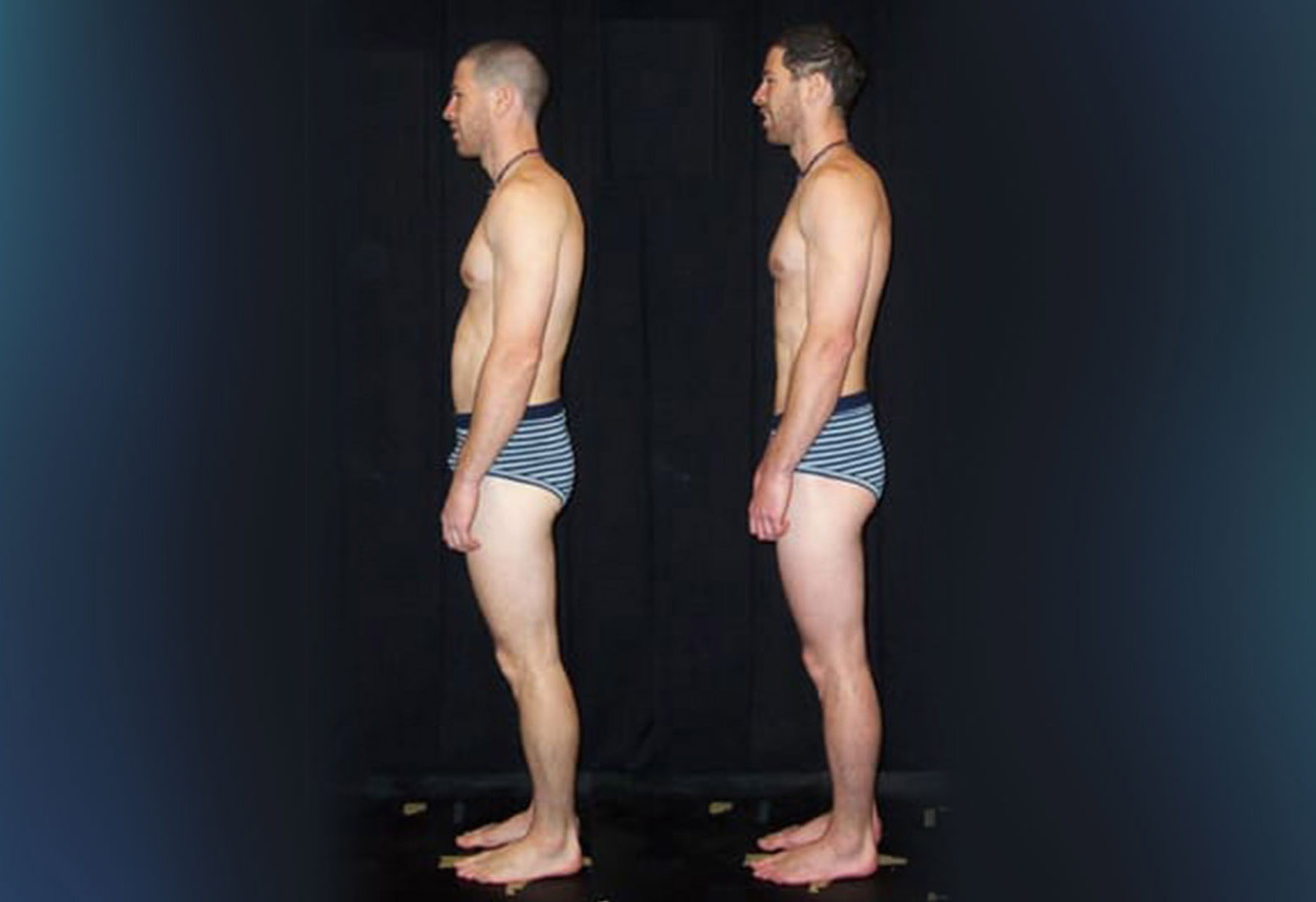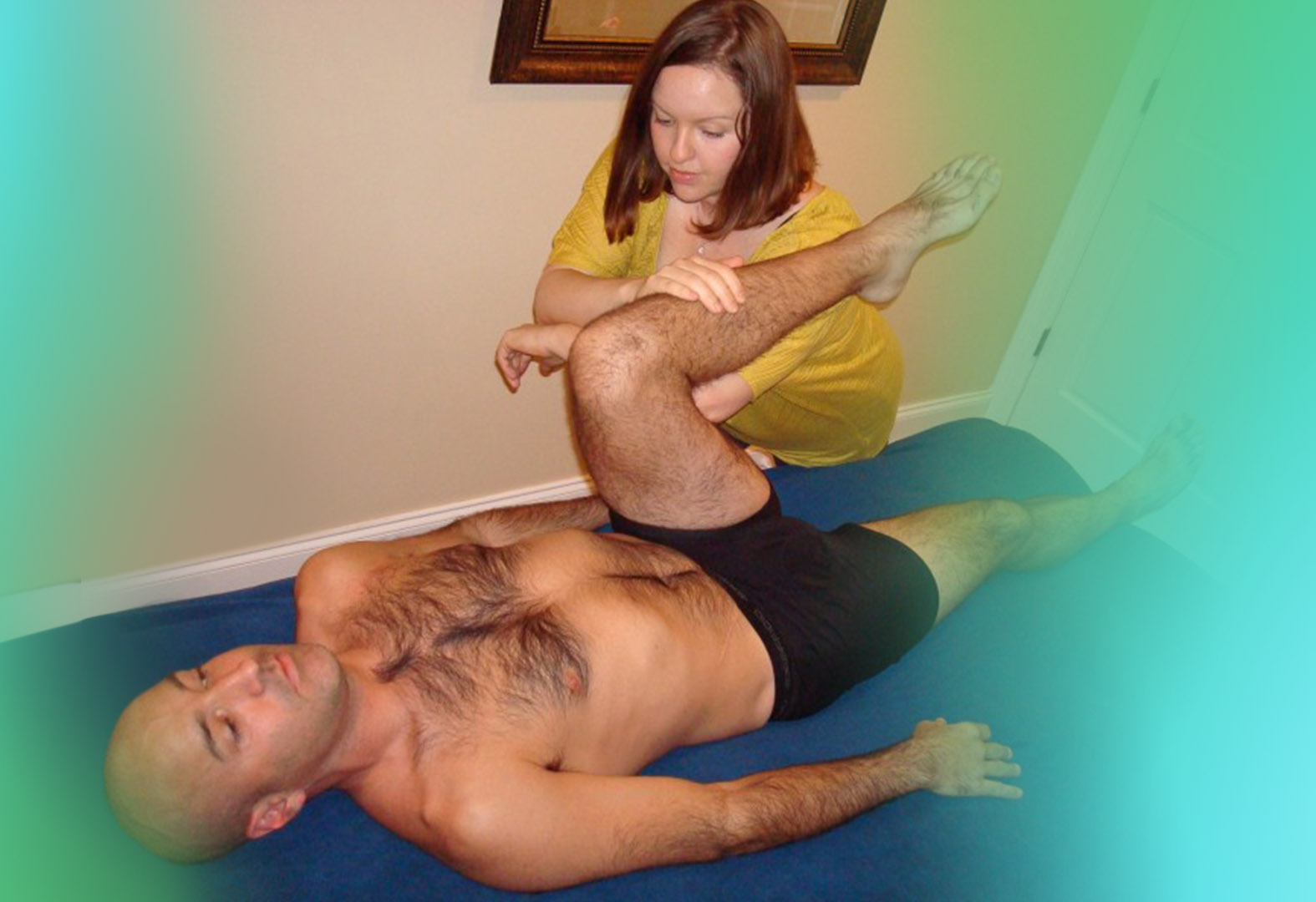What is Rolfing® Structural Integration?
Rolfing® Structural Integration is a hands on therapeutic technique provided by Connie Karas, New-Orleans and Baton Rouge based Certified Rolfing® practitioner.

Before and after ten sessions using the Rolfing structural integration technique
Your body is remarkably resilient, but when it loses its own natural alignment, due to varying external factors, this can result in stress that causes discomfort on multiple levels throughout the body. Application of the Rolf Method, by structurally correcting and re-aligning the body with gravity, helps restore order to the body, and reduces stress. This helps the body to function more efficiently.
After completing ten Rolfing SI sessions, you can expect to experience a better feeling of overall bodily freedom. Each Rolfing session focuses on specific areas of the body with specialized, individualized goals. In each session, the connective tissue in your body, referred to as the fascial system, will be slowly and firmly manipulated. Increased movement and a substantially better posture are just some of the benefits you can expect from experiencing the Rolfing technique. You will also gain a greater understanding of how your body operates in sync with gravity through these sessions, and gain newer, more efficient habits that decrease the likelihood of returning to the original state of misalignment that caused the original stress on your body.
All of the internal structures within the human frame are united by the fascial web which is connective tissue spread throughout the body. By working the fascial system, Rolfing incorporates movement with the body work and helps the body learn how to move with ease, therefore effecting chronic pain or recurrent issues. This distinguishes Rolfing SI from chiropractics, which deals with the skeletal system; and from therapeutic massage, which works with the musculature.
The History of Rolfing
The Rolfing technique has been in practice for over 60 years, and is named for its creator, Dr. Ida Rolf, who pioneered this technique of manipulating the body’s fascial system—the system of connective tissue that runs throughout the entire body—to release stress in the human form. It’s estimated that more than 1 million people have received Rolfing work.
Rolfing Goals
Rolfing SI can be applied as single, full Rolfing sessions, or is used within a session in the 10 series. The goals, among others, are:
- 1) Opening and orientation of the feet to the ground. Because the soles of the feet have a great number of receptors, a good grounding leads to release in the lower back and pelvic floor. The more receptors are active, the more vital are the muscles and structure of, and around the spine, which ensure, that the back can repeatedly find its balance in gravity.
- 2) Opening and orientation of arms and hands into the space, for a better connection to the world out there and to support the inner space. The hands also have a lot of receptors. The more active they are, the better the coordination of the structure of arms and the shoulder girdle. This leads to a release in shoulders and neck.
- 3) Opening and orientation of the head towards the sky, to become upright easily and support the back. We are visually oriented in our modern world, so to have a clear inner picture (awareness) about where the head is positioned in a soft and relaxed way will be beneficial for head, neck and back.
- 4) Awareness of the body’s core, the orientation around an inner centre will help to master effortless an upright posture and graceful movements.
- 5) Deep, full breathing capacity and a natural rhythm of the breath movement in all dimensions of the ribcage (front, back and sides)
- 6) Harmony in the coordination of muscles and muscle groups, differentiation of superficial and deep muscle structures for economic movements and increased range of movements.
Rolfing in the Media
Want to read and hear more about what Rolfing Structural Integration is all about? Check these out for yourself.
View videos on rolf.org
http://rolf.org/Press/Video
Rolfing on Oprah
http://www.oprah.com/health/Your-Questions-Answered
Vogue Article “Back in Style”
http://structuralevolution.org/blog/2007/03/02/vogue-article-featuring-me/
Musicians and Rolfing on the Wall Street Journal
http://online.wsj.com/article_email/SB117020048251292936-lMyQjAxMDE3NzAwOTIwMDkwWj.html
Rolfing: “Excruciatingly Helpful” on The New York Times
http://www.nytimes.com/2010/10/07/fashion/07rolfing.html
NFL Quarterback Jake Plummer does Rolfing
http://sportsillustrated.cnn.com/vault/article/magazine/MAG1181772/4/index.htm
ELLE Magazine “Supersize me: How to Have Correct Posture”
http://www.elle.com/beauty/health-fitness/supersize-me-how-to-have-correct-posture-655753
ROLFING: No longer a Fringe Therapy on health.usnews.com
http://health.usnews.com/health-news/articles/2012/09/05/rolfing-no-longer-a-fringe-therapy


